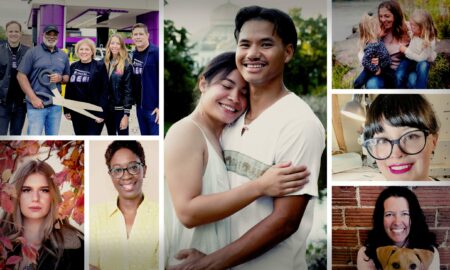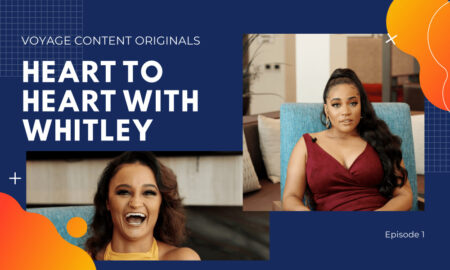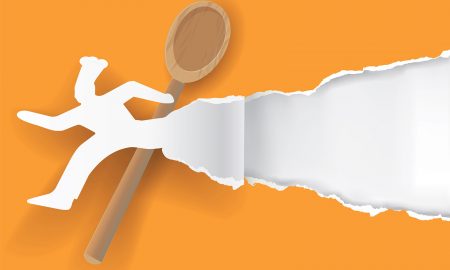

Today we’d like to introduce you to Kenneth G Bressler.
Hi Kenneth, we appreciate you taking the time to share your story with us today. Where does your story begin?
I grew up in the woods outside of Duluth. The Talmadge river ran through our property, and my siblings and I spent much of our time catching crayfish (as we called them), looking for agates, and building forts along the banks. There weren’t many organized activities for us to be a part of where we lived, so we had to develop strong imaginations and use them if we wanted to have fun. Fostering an imagination isn’t hard when you live in a place like that. Being surrounded by dense, mysterious forest, we were always making up stories about what was out there in the dark, making all those strange sounds that occur in a forest at night. So, when I began drawing as a small child, and making music as a teenager, that sense of imagination and mystery was what informed everything I did.
I took piano lessons for a couple years when I was nine or ten, and then I was in band in middle and high school (I played the French horn, badly), but it wasn’t until my junior year of high school that I found my niche and got into music-making as an art form. My German teacher played a lot of German music for us in class, which was always something I looked forward to. It was usually popular music, rather than polka or some other traditional genre, and one day he played us a song called “the model” by a group that would go on to fundamentally shape me as an artist and human: Kraftwerk. The sonic tinkerers from Düsseldorf: Ralf Hutter, Florian Schneider, Wolfgang Flur, and Karl Bartos gave rise to a generation of musicians who turned their backs on guitars and turned their attention to the futuristic buzzing of the Moog synthesizer. They used electronics to sculpt a new sound that paved the way for the synth pop of the 80s, and continues to influence popular music to this day. I remember hearing their angular, architectural sound for the first time and thinking: “this is what I want to do”. It was a light bulb switching on in my brain, illuminating corners of my creativity that I had not previously been aware of. I got a job bussing tables, saved up some money, and bought myself a synthesizer. It was a MicroKorg, with tiny keys and a confusing editing system that I did not fully grasp at the time, but between that and some music sequencing software, I was off! That was more than half my life ago, and while I have taken in more influences and shifted my perspective on art, music, and the world quite a lot since then, I still hold Kraftwerk close to my heart and their spirit of invention and discovery still play a huge role in everything that I do.
I think a lot of people tend not to nurture their imaginations as adults, which is something I’ve been aware of for a long time. When I was younger, most of my friends were constantly drawing or coming up with stories. It makes me sad when I reconnect with someone after not seeing them for a long time to discover that they’re no longer engaged with creativity of any kind; almost as though they’ve allowed that part of their self to wither and die. I have tried to keep that part of myself alive and well as an adult, because I consider it a central aspect of my being.
Can you talk to us about the obstacles you’ve encountered and lessons learned?
We know that artists (and all humans) are always comparing ourselves to others. If we didn’t do that, we probably wouldn’t be making art to begin with. After all, art is a communication tool for the transfer of the arcane. We make art and share it with each other to express things that cannot be easily put into language. I believe that is its true purpose, rather than simply a mode of indulgent self-expression. So, the way I look at artistic growth is that I’m looking for ways to become a more eloquent communicator of ideas. Sometimes that growth comes easily, and I can communicate a feeling or idea without much effort. Other times it’s difficult: I don’t fully know what I’m trying to say, or it feels like no one is listening. Worse yet is when the audience misinterprets the message an artist is trying to convey. Those times are the hardest for me. That’s not to overstate the gravity of my work: my audience is mostly a small group of friends and like minded musicians, so a misinterpretation isn’t going to lead to a global catastrophe. However: everyone knows what it feels like to not be heard or understood, and it’s frustrating! As social animals, we need to be heard and understood by our peers in order to thrive and be emotionally and mentally healthy. An artist’s job is to create understanding within a group of people, or between two groups. When things go well, and an artist or group of artists are able to communicate a message which is received and understood by an enthusiastic audience, a whole artistic movement can flourish. My goal is to grow and become more adept at communicating ideas, whether that is through technical skill or conceptual realization. The obstacles in my path have been the times of little growth; when I feel stagnant. Likewise, I would say that my biggest challenge has been learning to identify the cause for that stagnation, and do everything I can to remove the blockage. Sometimes it’s as simple as going for a walk to clear my mind, but other times it can be more complicated: interpersonal issues or general anxiety have ways of seeping into every aspect of life, and I don’t make a lot of art when I’m feeling pressure from things like that. When that happens, usually it’s because I’m going through a phase of taking in too much media. The news has a way of taking the wind out of my sails, as I’m sure is the case with most people, so I have found the need to take a step back and limit the amount of information that is allowed to enter my brain. That way I can ensure that there is always some room left for creating art that can hopefully go out into the world and have a positive impact on someone.
Thanks for sharing that. So, tell us more about your work next.
I have been making music with synthesizers since 2007, and while I have expanded my horizons beyond purely electronic music to incorporate traditional instruments like piano, organ, and guitar, the analog synthesizer remains at the center of my identity as a musician, and it is the instrument that I consider to be an extension of my own voice. There has always been something special about the sound of controlled, modulated, filtered, and amplified electricity that I find sublimely beautiful, and it ignites my imagination and inspires me in a way that no other instrument has done. The ability to create entirely new sounds has become something that I cannot live without, and the playful, open-ended nature of the instrument has worked its way into the way I perceive the world and approach problems.
Beyond my love for synthesizers, over the past decade I have immersed myself deeply into the realm of ambient music. Brian Eno coined the term in the mid-70s, defining it as “music that is as ignorable as it is interesting”. I love the idea of music that can be so gentle and so quiet that it naturally becomes a part of an environment, and has the ability to affect the mental and emotional states of those who wander into said environment, with or without their active engagement. Eno’s serene 1978 album “music for airports” was created using piano, synthesizer, and tape loops. The original purpose of the work was to be used as a sound installation in the Frankfurt airport. His hope was that he would be able to introduce some tranquility and peace into an otherwise chaotic, stressful environment. Whether this experiment succeeded I am not sure, but I think the goal of creating calm, peaceful spaces in our chaotic, often violent world is a beautifully humanitarian cause, and that is exactly what I hope to achieve with my own work. Something that the music of both Eno and Kraftwerk have in common is their radical departure from traditional forms: they have both created art that is utterly different from anything that has come before, and this is the type of thing that lights my imagination on fire and inspires me to get up and make something myself. Radical innovation is amazing in that anyone can do it. You don’t have to have years of classical training to make up something that’s entirely new. You just have to imagine it!
I have begun to view all art as though it exists on a spectrum: on one end we have work that is firmly rooted in tradition: classical music and representational art. A little further in we have folk art forms: traditional dances and country music. On the other end, we have abstract art, minimalism, and musique concrete; work having been fueled by the spirit of discovery. One end of the spectrum is interested in protecting tradition, and the other end concerns itself with change, and with finding the best way to adapt to it. It is my view that much of the music that exists in Duluth and greater Minnesota is closer to the former end of the spectrum, and I have found it challenging to find an audience for the more radical leaning stuff that I’m interested in. I think parallels can be drawn between a preference for traditional art and conservative political ideology. That isn’t to say that those who enjoy roots music are politically or socially conservative, but when a community doesn’t have a thriving scene of progressive, forward thinking artists coming up with new ideas, that can also mean they lack the driving force that is needed to propel themselves forward into the future and think creatively about how to solve any issues that they might be facing. Before I get too ahead of myself, I should express that it is also my view that there is much beauty and meaning in the preservation of tradition, and I think it is important to hold on to certain aspects of the past, so that we do not forget where we came from. There is not only room for both tradition and innovation, but it is a healthy mixture of both that makes a functioning, just society that works for everyone. We need to strike a balance between protecting those beautiful and timeless musical, artistic, and social traditions carried on across generations while also using a keen eye to determine which traditions and rules are no longer serving us but hindering our ability to adapt to a changing world, and let those go. Leaning too far into tradition results in a rigid, inflexible culture that cannot adapt, while leaning too far into innovation eliminates memory, and without memory we have no identity or direction.
One of my most defining moments as a musician thus far has been collaborating with Troy Rogers on his amazing MASS ceremony during the Duluth Homegrown festival of 2023. The event was a sort of satire of organized religion, taking place in Sacred Heart Music Center but supposedly 500 years into the future, when climate change has made the atmosphere unbreathable so that people have to wear respirators just to go outside. He developed the concept for a non-dogmatic religious ceremony that was centered around surrendering control of the planet back to Mother Earth, so that she can heal and create a place where life can thrive again. The whole ceremony was beautiful, and featured dancers, a drone orchestra, projected visuals by Daniel Benoit, an offering in which all the money collected was redistributed evenly among the congregation, and medieval liturgical music which featured a small choir and myself on the cathedral’s beautiful 1897 Felgemaker organ. The message of compassion for the environment and for each other was extremely powerful, and left me with a renewed sense of togetherness with the other human beings in my community. It was my first experience playing a real pipe organ, which was incredible in itself, but the real magic of the event was the novelty of it: simply the feeling that nothing like that had ever happened before, at least not here, and the sense that because someone thought to do that, anyone could think to do anything else! It’s hard to put into words, but just taking a step back and realizing that anything is possible is a potent fuel for creativity. Sometimes we just need an example of originality to get the cogs turning.
Since 2021, I have been curating an event in Duluth called Sound Lab, which showcases Minnesota based composers and musicians who eschew traditional music forms in pursuit of new forms that promote creative and social progress. It is my belief that change is inevitable regardless of the attitude that we have towards it, so we may as well embrace it and prepare for it as well as we can. Learning how to break rules that no longer make sense is a way of adapting to change and forge ahead across uncharted territory. I want my city to have a place where people can go and interact with others who accept that change is happening everywhere around us, all the time; where they can reflect on that and march boldly into it as artists and creative people; where they can think outside the box and let their dreams run wild, and know that they can turn to the person next to them and share their ideas. If we can create that space, then I am confident that we can thrive as a community. That is why I think progressive, novel ways of thinking are so important in music and art, and that is what I am hoping to do with Sound Lab. We will be holding the tenth installment of the event at Wussow’s concert cafe in West Duluth on June 22nd.
If we knew you growing up, how would we have described you?
I guess I’ve already touched on what my childhood was like growing up with two siblings in a rural area; we had to turn to each other and ourselves for entertainment. We spent much of our time running through the woods and building forts out of fallen branches. We invented worlds and made up stories about the creatures that lived in the woods. Growing up in such a quiet place was good for my developing imagination, but sometimes, when I look back, I see a very lonely child who would have done well in a larger city with other art kids to spend time with. Most of the other kids my age in our area were into shooting guns, lighting off fireworks, and riding dirt bikes; all of which I did partake in, if only out of a desire to be accepted. I always felt like I was stretching myself uncomfortably to fit in, and I think most of the time spent on things like that was wasted. There weren’t many opportunities for me or my siblings to discover music or art where we lived, and I think I would have chosen somewhere else to raise a family. Of course, my parents were doing their best with the tools their parents had given them, so I don’t hold it against them. It’s not useful to think longingly of all the things that could have been; the past is nothing but a pool of cloudy memories, and there is nothing any of us can do to change it. Mostly I do look back fondly on my childhood, and wouldn’t trade a single one of my experiences for anything. We are all products of our upbringing: our environments and the things that happen to us shape us into the unique, flawed, beautiful beings that we are. I am happy to say that I like who I am, and I have every thing that has ever happened to me and every person who I’ve ever met to thank for that.
Contact Info:
- Website: https://kennethgbressler.bandcamp.com/
- Instagram: https://www.instagram.com/kennethgbressler?igsh=d3l0ZTY3cWtmajlp&utm_source=qr




Image Credits
Keely Zynda Kate Monson Aaron Reichow











